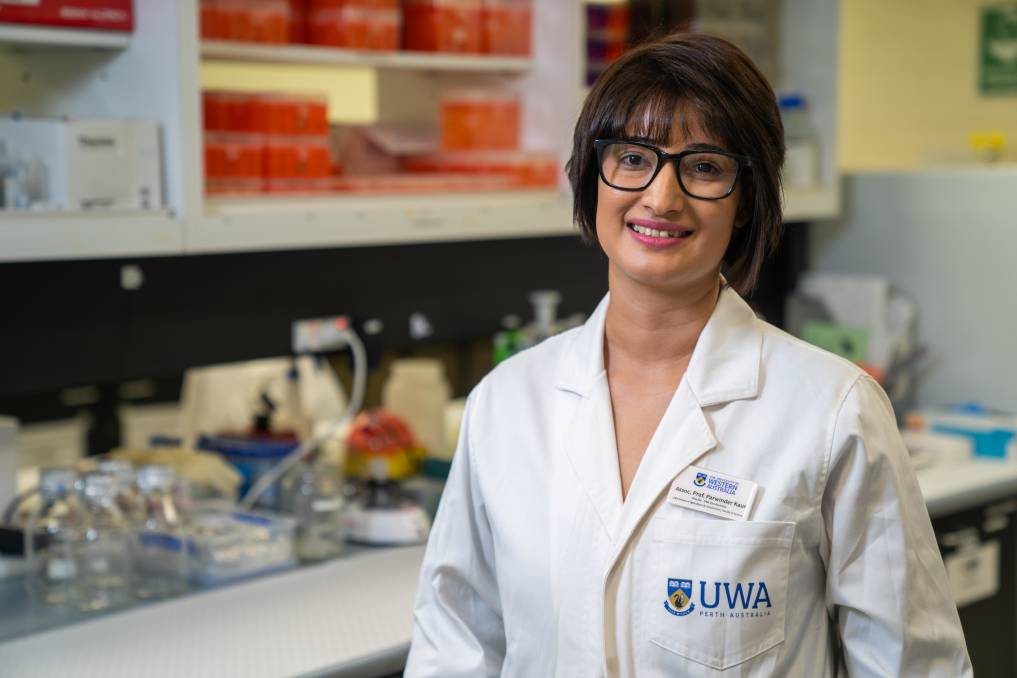Dr Parwinder Kaur is a self-described ‘DNA nerd’. The kind of nerd who chases the mysteries of how life evolved on Earth.
And that’s just the kind of nerd we need right now, especially given how her work offers genomic empowerment to Australia’s biodiversity, ultimately supporting conservation efforts for threatened and endangered species.
But it hasn’t been easy getting to where she is. One of her biggest challenges was convincing her family and community that pursuing an education would be a better investment “than the traditional route of dowry and marriage”.
*****
Want more from women in STEM? Subscribe to our weekly The STEM Wrap
Dr Kaur is the Director of DNA Zoo Australia and leads the Translational Genomics research program. She’s also working to translate fundamental science into ready-to-use solutions across the agricultural and medical sectors. Running a DNA Lab, her team uses new age technologies such as CRISPR genome editing, single-cell and 3D genomics.
Overall, Dr Kaur has made substantial contributions to biotechnology and won numerous awards for her work, which is why we asked her to participate in our STEM Gamechanger Q&A.
Her key tip? Know your strengths and find mentors to support you.
In one sentence, how do you describe what you do?
I am a DNA nerd chasing the mysteries of evolution of life on this planet
Is this the career you always imagined?
From a young age, my biggest challenge was convincing family and community that female education and pursuing a career is of value, and a better investment than the traditional route of dowry and marriage. Having a natural thirst for knowledge it was a battle to overcome rigid cultural norms and carve a course allowing me to attend university.
Just perfect timing to win a PhD scholarship as the way to “Escape marriage”, and come to Australia to pursue my passion.
I always wanted a career that is evolving and exciting every morning I go to work and here I am following a hobby to discover new secrets of life through the lens of DNA- the blueprint of life!
What’s behind your passion and hard work?
My key motivation is to help solve the worlds’ biggest problems with science and determination to bring STEM into everyday life. Curiosity to solve the mysteries of evolution of life on this planet drives me.
In making this all happen, what would you say has been particularly pivotal to your success in STEM?
My biggest challenge has been feelings of isolation, an unsupportive work environment, extreme work schedules, and unclear rules about advancement and success in Academia. How well you “fit” (i.e., your sense of belonging) in your department. “If you feel like you don’t fit or belong—for whatever reasons—your satisfaction is bound to be lower, because not only is it human nature to want to belong … It is crucial for getting tenure.
I have benefitted immensely by getting mentors from within and outside academia who I personally aspire to be. These mentors have helped me identify my strengths and provided the confidence for me to chase the dreams I set out to following this route of science. Trust me it make a huge difference when you have people behind you saying we BELIEVE you got this!
Know your strengths… find a MENTOR!
What more needs to or can be done to support more women in STEM?
Creating a “growth mindset” environment. That is, believing in the potential for intellectual growth, in and of itself, improves outcomes, where negative stereotypes persist about WOMEN abilities. MINDSET MATTERS!
One of the largest gender differences in cognitive abilities is found in the area of spatial skills, with boys and men consistently outperforming girls and women. If girls grow up in an environment that enhances their success in science and math with spatial skills training, they are more likely to develop their skills as well as their confidence and consider a future in a STEM field.
Little changes can make big differences. The foundation for a STEM career is laid early in life, but scientists and engineers are made in colleges and universities. College and university administrators can recruit and retain more women by implementing mentoring programs and effective work-life policies for all faculty members. Smash stereotypes, know your strengths!
Are there any key tips you can share for other women in STEM?
My guiding mantra is “Never be afraid to achieve, afraid to learn and explore new dimensions in life. Everything is simple if you break it down.”
*****
Want more from women in STEM? Subscribe to our weekly The STEM Wrap


